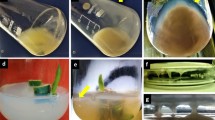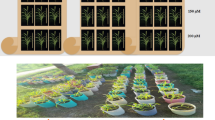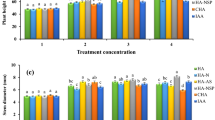Abstract
IN the middle of 1935 we began an investigation into the effect of vitamin C on plants, and the general growth response since claimed by Synnöve v. Hausen1 was obtained by us with tomato and castor oil plants.
This is a preview of subscription content, access via your institution
Access options
Subscribe to this journal
Receive 51 print issues and online access
$199.00 per year
only $3.90 per issue
Buy this article
- Purchase on SpringerLink
- Instant access to full article PDF
Prices may be subject to local taxes which are calculated during checkout
Similar content being viewed by others
References
Synnöve v. Hausen, NATURE, 136, 516 (1935).
R. Majima and T. Hoshino, Ber., 58, 2043 (1925).
K. V. Thimann and J. B. Koeptli, NATURE, 135, 101 (1935).
Pfeffer; see Knudson, Bot. Gaz., 73, 1–25 (1922).
L. Havas, NATURE, 136, 435 (1935).
F. A. F. C. Went, Biol. Rev., 10, 2 (1935).
Author information
Authors and Affiliations
Rights and permissions
About this article
Cite this article
DAVIES, W., ATKINS, G. & HUDSON, P. Effect of Ascorbic Acid and Indolyl Acetic Acid on Regeneration of Willow Branches and Germination. Nature 137, 618 (1936). https://doi.org/10.1038/137618a0
Issue date:
DOI: https://doi.org/10.1038/137618a0
This article is cited by
-
Die Wirkung des Vitamins C auf die Atmung von Keimlingen
Planta (1952)



